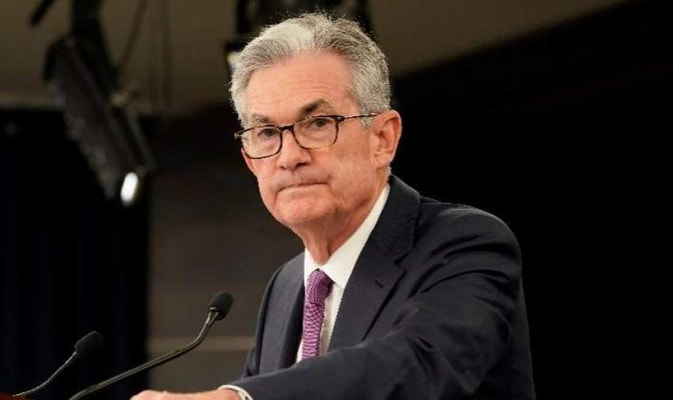Fed raises interest rates by 0.25% but signals a possible pause

4 MAY, 2023
By RankiaPro Europe

As predicted by experts, the Federal Reserve announced an interest rate increase of 0.25 basis points to fight inflation, which is the tenth consecutive increase and brings rates to 5.25%. This is the largest tightening of the Fed's monetary policy since the 1980s.
However, in the statement published after yesterday's meeting, the body chaired by Jerome Powell indicates a pause in the increases, as it did not refer to the need for further increases as it did after the last meeting in March. The Fed's goal, according to Powell, is to bring inflation below 2%, even though forecasts indicate a slow decline in inflation, which remains at 5% in the US.
Powell adds that 'with today's decision we have already raised rates by five points in just over a year', so 'it will take time to see the full effects of monetary tightening on the US economy'. These effects include the fact that 'the economy will particularly feel this tightening after the banking problems'.
However, Powell made it clear that 'we will be ready if more restraint in economic policy is needed'.
Christophe Morel, Chief Economist at Groupama AM

Beyond June, J. Powell is not contemplating a cut in benchmark rates, which he even considers "inadequate" in the face of a scenario of slow disinflation. Moreover, the Fed is opening the door to another rate hike. In doing so, the Fed's communication supports our monetary scenario. First, we do not foresee a rate cut despite a recession scenario in the second half of 2023 that would translate into a contraction in investment and a slowdown in consumption via the wealth effect linked to the correction in real estate prices.
The Fed has benefited from the monetary experience of the early 1980s and will not risk reviving inflation expectations by easing monetary conditions. It will extend the horizon as long as the labour market remains tight and the investment cycle recovers after a fairly brief recession. Therefore, we believe that this recession will be "mild" in the sense that it will not cause a significant deterioration in the labour market, forcing the Fed to raise Fed Funds again. Monetary policy is still not tight enough.
At the end of the press conference, J. Powell made his "mea culpa" by acknowledging that the Fed made mistakes in its bank supervision. This failure in bank management damages the credibility of the Fed which is also crumbling, in our opinion, in terms of monetary management.
Keith Wade, Chief Economist and Strategist, Schroders

After raising rates as expected at its meeting yesterday, it appears that the Fed's policy will be more data-driven and more event-driven as it eases future rate hikes.
The US Federal Reserve (Fed) raised rates by 25 basis points to between 5% and 5.25%, in line with market expectations. But the key change came in the official monetary policy statement, in which the Fed deleted the phrase "the committee anticipates that additional monetary policy tightening may be appropriate".
Instead, it stated: "in determining the extent to which additional monetary policy tightening may be appropriate… the Committee will take into account cumulative tightening, the lags with which monetary policy affects economic activity and inflation, and economic and financial developments".
Looking ahead, it seems that policy will be more data-driven and will depend on how events unfold. So, the Fed is turning off the autopilot on rate hikes, but has cruising altitude been reached on rates?
Obviously, this will now depend on growth and inflation figures, especially the latter. However, Fed Chairman Powell gave us an idea of what he thinks in his post-meeting press conference, where he said he believed the level of interest rates was already in tightening territory, at around 2% in real terms.
We believe that we have already seen the peak and that the next move in rates will be downwards. But the modest economic slowdown to date needs to turn into something more dramatic to create meaningful slack in the economy and bring inflation back to the target level".
Chairman Powell declined to address the debt ceiling debate, saying it was not relevant to today's decision. However, he acknowledged that it had been mentioned as an adverse risk to the outlook.
Luke Bartholomew, Senior Economist at abrdn

The Fed's rate hike was widely expected, so the main factor of interest was what Jerome Powell's Fed was going to say about the likely path of rates going forward. By removing language from its statement that pointed to more hikes in the future, the Fed is pointing to a likely pause in rates at the current level. A pause makes sense, as the monetary authority tries to assess the impact its tightening policies have had on credit conditions, on the one hand, and the risk of inflation remaining too high, on the other.
We believe that the most likely step after this pause is a rate cut by the end of the year. There is certainly a risk that persistently high inflation data will force the Fed to raise rates at the end of the year, but we believe that the economy is heading towards a recovery phase, but we believe that the economy is heading towards a recession, which will eventually cause the Fed to enter a major easing cycle.
Susan Hill, CFA, Senior Vice President, Senior Portfolio Manager & Head of Government Liquidity Group at Federated Hermes

The Federal Reserve raised the fed funds target range by 25 basis points last night, lifting it to a range of 5-5.25%. This marked a 16-year high for the policy rate and the 10th increase since the tightening cycle began in March 2022.
A contextual change in the FOMC post-meeting statement hinted strongly that policymakers are content to move to the side-lines for a while. Out was the March statement’s sentence: “The Committee anticipates that some additional policy firming may be appropriate.” In was: “In determining the extent to which additional policy firming may be appropriate to return inflation to 2% over time.”
Chair Jerome Powell said the decision to pause hadn’t been made but emphasized that policy action at the upcoming meeting in June would be more data-dependent than ever. We think this is the appropriate stance. Until the economic impact of tighter credit conditions resulting from the March banking sector stresses is better understood, taking a breather is warranted.
In light of the banking turmoil in mid-March, we have been watching for signs that the Fed may be revisiting its quantitative tightening plans. None took place today. The FOMC will continue to reduce its holdings of Treasuries and agency securities (including agency mortgage-backed securities) at a pace of $95 billion per month. Powell came under fire over the supervisory shortcomings connected with the failures of Silicon Valley and Signature banks, saying the Fed would address its failings. In response to questions about the debt limit, though, the Chair responded “we shouldn’t even be talking about a world in which the U.S. doesn’t pay its bills.” We completely agree.
The Fed kept the administered rates unchanged, increasing the Reverse Repo Facility by 25 basis points to 5.05%. Powell said he was not concerned about its recent growth.
Tiffany Wilding, PIMCO Managing Director, Economist

What happened? The U.S. Federal Reserve hiked its benchmark rate 25 basis points (bps) and signaled they expect to hold rates steady in June as expected. However, the “pause language” was somewhat more definitive than expected. Although the Fed preserved the option to continue hiking if needed, they pledged to take account of cumulative tightening to date, monetary policy lags, and financial market developments – all factors that suggest a pause is appropriate.
What should we expect? Today’s rate hike is very likely the last of the rate hiking cycle. Looking ahead, we expect that the drag on real activity of the recent banking sector stress and tighter credit conditions will grow, and eventually contribute to the US following into a modest recession. With the Fed’s action today they signaled that they also see growing downside economic risks, despite still elevated inflation.
Bottom line: Monetary policy is tight, and the effects of tight monetary policy are becoming clearer. Inflation is still elevated, but the outlook has darkened, and the Fed, in an effort to manage downside risks, is now pivoting to a holding pattern.


